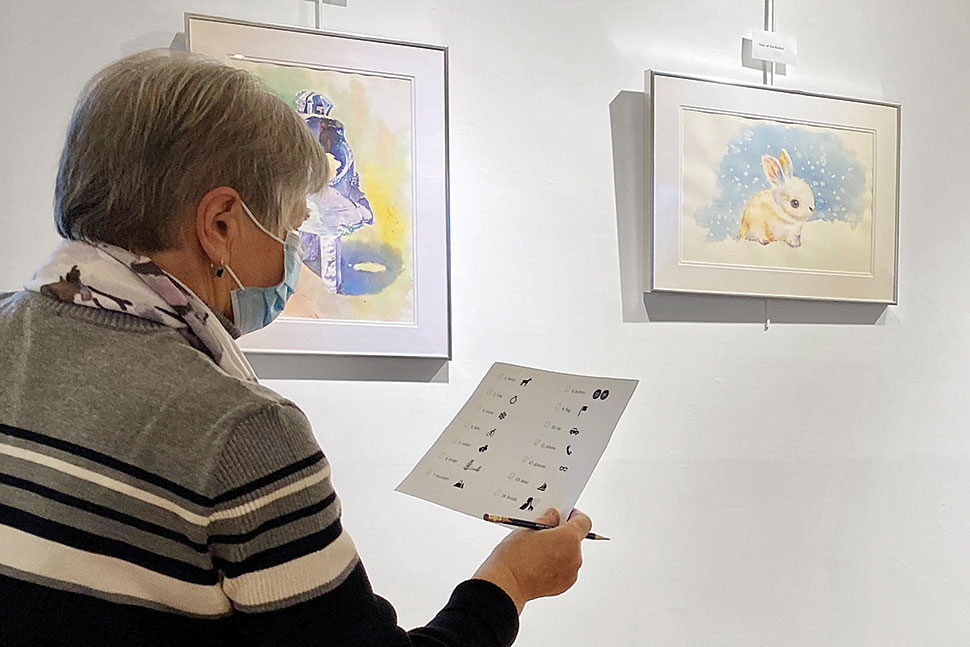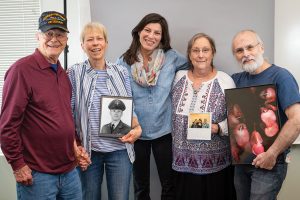
It’s not unusual for libraries to offer English as a Second Language (ESL) and citizenship preparation programs. But Jones Library (JL) in Amherst, Massachusetts, has designed a program specifically for older adult beginners ages 50 and over.
A college town that attracts workers and academics from around the world, Amherst has a higher immigrant population rate than the country as a whole. According to 2021 US Census data, nearly 17% of people living in Amherst were born in another country, as compared with the national rate of 13.6%.
In 2022, US Citizenship and Immigration Services (USCIS) announced it would offer grants for innovative citizen preparation programs that prioritize hard-to-reach immigrant populations. This past fall, USCIS provided JL with a two-year, $121,000 grant to design, field-test, and make publicly available its English for Older Beginners curriculum. ESL and Citizenship Coordinator Lynne Weintraub expects to publish the curriculum on JL’s website by late 2023.
It’s never too late to learn new skills. My mission is to help adult newcomers to the United States find a way to learn English, whether through individual tutoring, informal conversation groups, or program referrals. I aim to find a solution for any community member who asks for help, but over the years this has been a challenge for older beginners.
My colleagues and I have found that many older residents come into the library asking for practical communication skills, but they don’t necessarily thrive in the fast-moving programs usually designed for younger immigrants. And volunteer tutors often don’t have the time and skillset to work effectively with true beginners—those who cannot yet name letters or answer basic personal background questions.
In 2018, after a local ESL classroom had turned away an older Tibetan man because his goals didn’t align with the program’s focus on college and career readiness, I was inspired to start teaching a group of JL patrons in their 50s to 80s. My objectives were to provide this group with the tools for oral communication and literacy and an orientation to our community and customs as they embarked on their journey to citizenship. Over time, the class size has fluctuated from six to 10 people. My current older adult students have come from China, Russia, and Vietnam.
The USCIS grant has allowed me to join JL full-time. It will soon fund the program’s expansion from two to three lessons per week and bring in a coteacher to help ensure the guide we’re creating is useful to novice instructors.
Students’ speed of auditory processing and working memory may vary with age, so I relax the instruction’s pace, offer more refreshers, and provide extra time for students to formulate responses to questions. New information is presented in careful stages, and each new skill is practiced before another is introduced.
I’ve so far learned that older beginners do best when instruction is highly contextualized and relates to their daily lives rather than the academic or workplace language that adult ESL classes typically focus on. My students learn by talking about themselves and using vocabulary related to where they’re from, where they live, their grandchildren, their daily routines, and their emotions, health, and safety.
Students also learn about the community and its services by visiting places within walking distance of the library. We’ve visited the senior center, an art gallery, and the town hall—where they seemed surprised by the easy and inexpensive transaction of me getting a dog license. Before each trip, I identify key vocabulary related to the location and organize scavenger hunts for items mentioned during those lessons. Students also get closer to becoming citizens by reviewing basic test questions. They have the option to participate in practice interviews, proving to them that citizenship is indeed a possibility.
Older beginners do best when instruction is highly contextualized and relates to their daily lives.
Another implicit goal of the class is to reduce feelings of isolation. Social isolation is common among older adults, but linguistic isolation makes it so much more difficult for immigrants. As they learn about one another, they build connections. They bring in cultural foods or gifts during holidays and help one another when possible. They learn social expressions to communicate in a meaningful way. I teach congratulations when a new grandchild arrives, or we write get-well cards when a classmate is sick. During one class, a normally shy student turned to a classmate who had just lost a relative and—with a deep well of empathy—shared an “I’m sorry.”
It’s important that these students have consistent classroom routines and know they will never be rushed or pressured to perform. Building confidence and a cooperative learning environment should be emphasized, and every success should be celebrated. Students have come and gone—especially because of the yearlong gap in classes caused by the pandemic—but I’ve seen clear progress in English proficiency and citizenship test readiness. The students are more engaged, confident, and genuinely happy to be spending time together productively.


